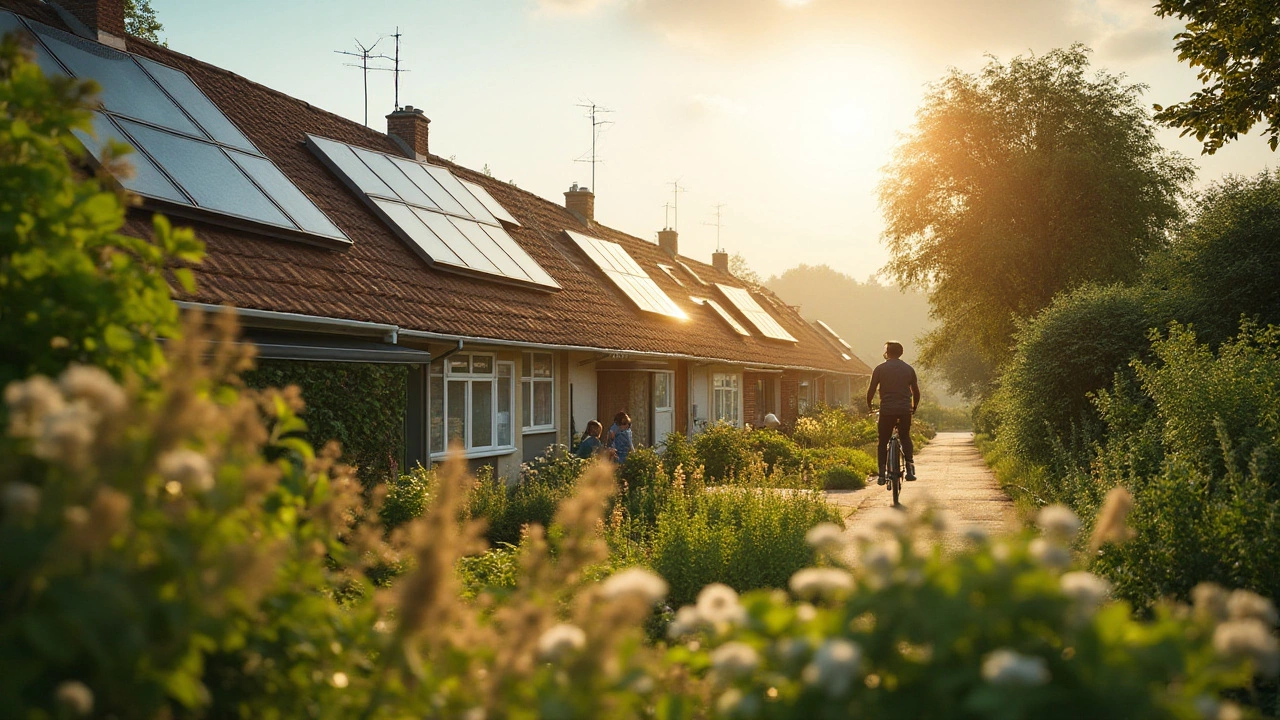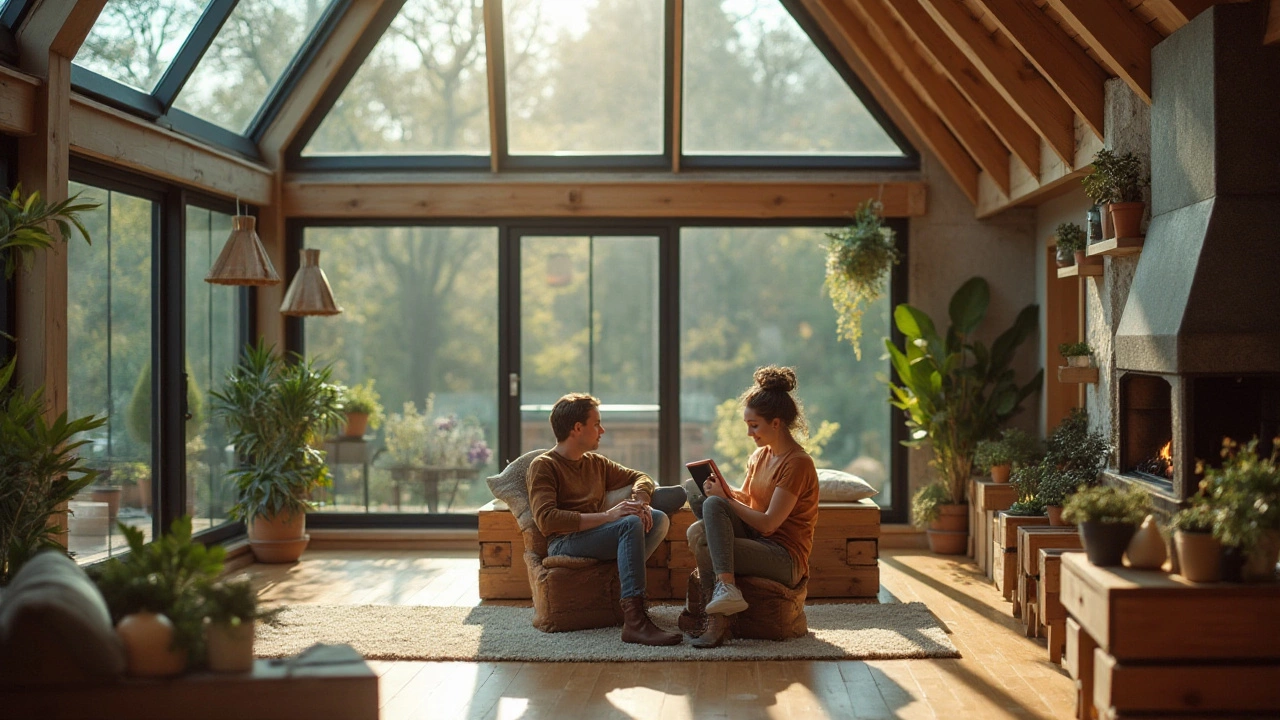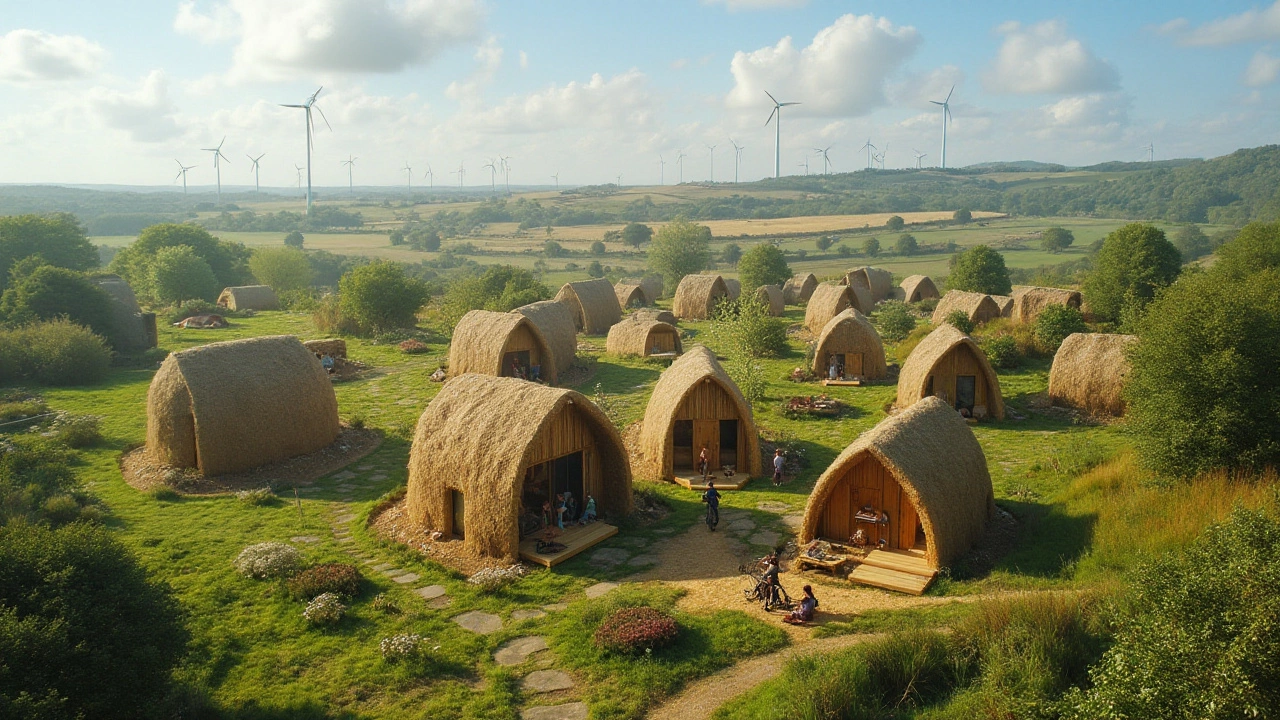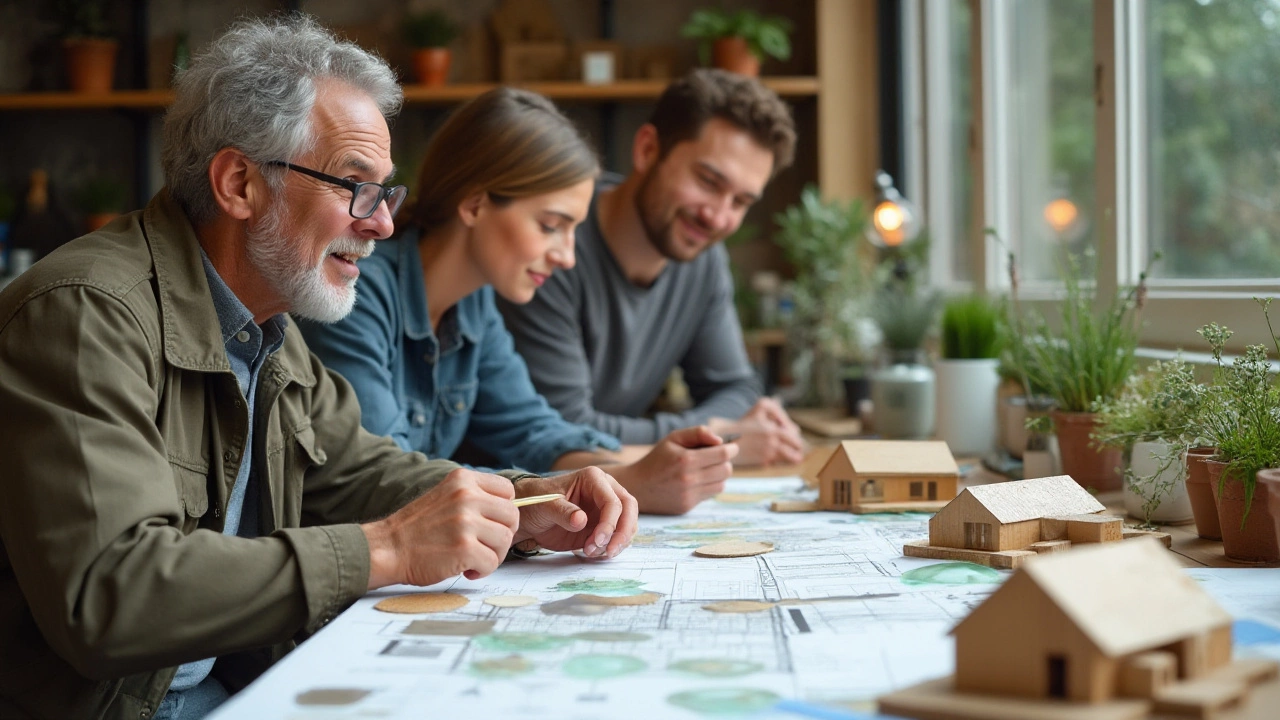Exploring the Costs of Eco-Friendly Homes: Are They Worth It?

As our awareness of environmental issues grows, many are turning their eyes toward eco-friendly houses that promise efficiency and sustainability. But with their appeal comes the big question: how much will it cost you to embrace green living?
Eco-friendly homes incorporate various sustainable design elements and technologies aimed at minimizing environmental impact. From solar panels to rainwater harvesting systems, these houses offer innovative ways to live sustainably. Yet, the price tag attached to these features can vary significantly.
While some perceive sustainable homes as expensive, it's crucial to break down the costs and understand what you're really paying for. Whether you're weighing the initial investment or considering long-term savings, this journey into the world of eco-friendly homes will offer valuable insights for anyone dreaming of a greener future.
- Understanding Eco-Friendly House Features
- Cost Factors of Green Homes
- Comparing Costs: Traditional vs. Eco-Friendly
- Financial and Environmental Benefits
Understanding Eco-Friendly House Features
In a world where climate change is a pressing matter, the concept of eco-friendly homes is not just a trend but a growing lifestyle choice. These homes are characterized by their use of sustainable construction materials and energy-efficient design aimed at reducing carbon footprints. Sustainable materials like bamboo, recycled steel, and reclaimed wood are popular in constructing such homes. These materials not only minimize environmental impact but are also known for their durability and aesthetics. Solar panels are another staple of eco-friendly houses, providing renewable energy that reduces dependency on fossil fuels.
Beyond materials, it's essential to consider energy-efficient technologies that make these houses a beacon of sustainable living. A prime feature is the geothermal heating and cooling system, which capitalizes on the earth’s natural temperature regulation capabilities. This results in significant energy savings and a reduced ecological footprint. Further, incorporating smart home systems allows homeowners to optimize energy use by controlling lighting, heating, and appliances with precision. Such innovations position eco-friendly homes as not only sustainable but also technologically advanced living spaces.
“Sustainability is no longer about doing less harm. It's about doing more good.” - Jochen Zeitz, co-founder of The B Team.
Another crucial aspect is water conservation techniques employed in eco-friendly homes. Rainwater harvesting systems and greywater recycling are becoming common practices. These systems collect rainwater and household wastewater, which can be filtered and reused for irrigation and flushing toilets. This not only preserves precious water resources but is also cost-effective in the long run. Moreover, low-flow fixtures ensure that water usage is kept to a minimum without compromising on functionality.
An often overlooked feature of sustainable homes is insulation, which plays a pivotal role in energy preservation. Using materials like sheep wool and cellulose, derived from recycled newspaper, these homes can maintain temperatures efficiently, reducing the need for artificial heating and cooling. Insulation enhances comfort and cuts down on energy bills, adding to the appeal of eco-friendly homes. Windows, too, are given special consideration; triple-glazed options prevent heat loss and keep interiors cozy during colder months.
For those concerned about indoor air quality, eco homes often incorporate non-toxic paints and finishes that do not emit volatile organic compounds (VOCs). These contribute to healthier living spaces and improve overall well-being. Designing these homes with passive solar orientation is another intelligent strategy to maximize natural light and thermal energy via strategic window placement and shading.
Embracing Innovation in Design
Architectural ingenuity is frequently on display in these homes through the use of green roofs and living walls. Green roofs, covered with vegetation, offer excellent insulation and absorb rainwater, reducing runoff. Living walls, on the other hand, bring a slice of nature indoors, enhancing air quality and aesthetics. Both are key components contributing to reduced urban heat and promoting biodiversity. Given these innovative features, it's no wonder that sustainable houses are on the rise. Their design prioritizes harmony with nature while embracing modern conveniences, ensuring that these homes remain functional, comfortable, and a testament to the power of green living.
The transformation to a greener household is no small feat but understanding these features can help homeowners make informed choices. Whether motivated by a desire for sustainability or simply a preference for modern comfort, eco-friendly homes provide a worthwhile investment in the planet and future generations.

Cost Factors of Green Homes
When diving into the world of eco-friendly homes, one immediately encounters a range of factors that contribute to their final cost. One of the primary considerations is location. Just as with any property, the geographic setting of your home plays a crucial role. Homes built in areas with abundant natural resources and favorable climates, such as ample sunlight for solar power, tend to present different cost scenarios than those in less advantageous locations. The initial land costs can also vary, and urban settings often mean higher prices compared to rural areas.
The choice of materials is another pivotal factor that shapes the financial landscape of green home construction. Sustainable materials, such as reclaimed wood, bamboo, or recycled metal, may come at a premium compared to conventional options. However, their durability and lower environmental footprint often offset the initial expense in the long run. Using locally sourced materials can also help reduce both transportation costs and the carbon footprint of the project. Some builders opt for the latest in innovative materials, including energy-efficient windows and insulation, which, while initially costly, yield significant energy savings over time.
Adding high-tech energy-saving installations, like solar panels and geothermal heating, influences the overall cost of an eco home. These technologies, although costly upfront, offer substantial savings on utility bills and are often supported by government incentives or rebates. The effectiveness of these installations depends on the technology's efficiency, the specific conditions of the home’s location, and how well it is integrated into the home’s design. In some cases, installing these systems can increase the home’s market value significantly.
Green building costs are also affected by labor and expertise. Hiring contractors with experience in sustainable building practices is crucial, but they often charge a premium for their specialized skills. These professionals justifiably command higher fees due to their knowledge in creating homes that efficiently balance aesthetic appeal with energy efficiency. Training in the latest sustainable technologies and adherence to eco-friendly building codes can further add to labor costs.
"The upfront investment in green technology might seem daunting," explains Linda Schneider, an expert in sustainable architecture. "But the long-term savings and environmental benefits outweigh the initial costs in many cases."
If you are considering constructing or buying a green home, using energy-efficient technologies and sustainable materials, while potentially raising initial expenses, can lead to substantial cost savings and lifestyle benefits in the long run. Some studies suggest that energy-efficient homes consume 25% to 30% less energy, leading to lower monthly utility bills, which can accumulate to significant savings over time.

Comparing Costs: Traditional vs. Eco-Friendly
When it comes to buying a home, the financial aspect is at the forefront of many prospective buyers' minds. At first glance, the price tag on a traditional home might appear more appealing than an eco-friendly home. Traditional homes are often built using tried and tested methods that have been streamlined for decades. The materials are usually cheaper, and the construction time is shorter. However, beneath the surface savings, there are hidden costs that don't appear on the initial bill. Traditional homes are typically less energy-efficient, leading to higher utility bills monthly. Over time, these expenses accumulate, surprisingly outweighing an initial modest financial advantage.
On the other side of the spectrum, a sustainable home may require a larger upfront investment. The cost of integrating green technologies and sourcing sustainable materials can inflate the price. For instance, implementing energy-efficient windows or geothermal heating can add tens of thousands of dollars to construction costs. Yet, many see this not as a cost but as an investment in the future. A study by the National Renewable Energy Laboratory found that eco-friendly homes sell at a premium and spend less time on the market. The immediate savings on energy bills start the moment you move in, which over time, help offset upfront expenditures.
"Building an eco-friendly home is not just a financial investment, but also an investment in our planet," suggested the Green Building Council in 2023.
Let's delve into a direct comparison with some data. According to a 2022 study, while the average cost of a traditional home might range around $300,000, an eco-friendly home might start at $350,000. However, with incentive programs, rebates for solar panels, and lower monthly energy bills (ranging from 30-60% savings), the financial balance shifts within a decade or less. A simple table can illustrate potential long-term savings:
| Year | Traditional Home Costs (Energy) | Eco-Friendly Home Costs (Energy) |
|---|---|---|
| Year 1 | $2,400 | $1,200 |
| Year 5 | $12,000 | $6,000 |
| Year 10 | $24,000 | $12,000 |
Thus, while the initial cost of an eco-friendly home may be higher, the real savings manifest as you live in and maintain your home over time. It's vital to align the choice not only with your financial capacity but also with a long-term vision for living sustainably. With growing awareness and numerous green financing options, many believe that the question isn't whether you can afford an eco-friendly house, but whether you can afford not to consider one for the future.

Financial and Environmental Benefits
When considering the allure of eco-friendly homes, one cannot overlook their financial and environmental advantages. Initially, prospective buyers might hesitate due to perceived high upfront costs, but these green havens often yield substantial long-term savings. A key benefit lies in reduced energy bills, thanks to advanced insulation, energy-efficient appliances, and smart technologies like solar panels. According to the U.S. Department of Energy, homes that adhere to the Energy Star certification can save owners up to 30% more than homes built to standard code. By harnessing natural energy sources, residents can enjoy consistent utility savings, making eco-friendly homes a wise financial choice.
These houses often boast sustainable materials, designed to minimize the carbon footprint compared to conventional homes. Many eco-homes capitalize on recycled materials or sustainably sourced wood, which not only offers durability but also treads lightly on our planet. Beyond the materials, the blueprint of a sustainable home often includes passive design techniques, which are sheer genius for maximizing natural light and reducing dependence on artificial light sources. Imagine sitting in your living room with the sunlight streaming in, naturally heating your winter days.
A well-known environmental architect once said, "The best energy is the energy you don’t have to use."
Moreover, the market value of sustainable houses is experiencing an upward trend. As sustainability becomes ever more essential, buyers are increasingly willing to pay a premium for homes that align with their green values. A report from the National Association of Realtors noted that properties with green certifications tend to sell for up to 9% more than non-certified counterparts. This indicates that the initial higher investment in a sustainable residence might not just stay in your pocket through lower bills but could also translate into a lucrative return should you decide to sell.
The environmental benefits are just as significant as the financial ones. By swapping conventional designs for green building costs, homeowners participate in global efforts to combat climate change. Homes that incorporate renewable energy technologies reduce greenhouse gas emissions—a critical step toward achieving the international climate goals outlined in various global accords. Furthermore, by utilizing rainwater harvesting and water-efficient plumbing, these houses contribute to water conservation, ensuring that one of our most vital resources is used sparingly and wisely.